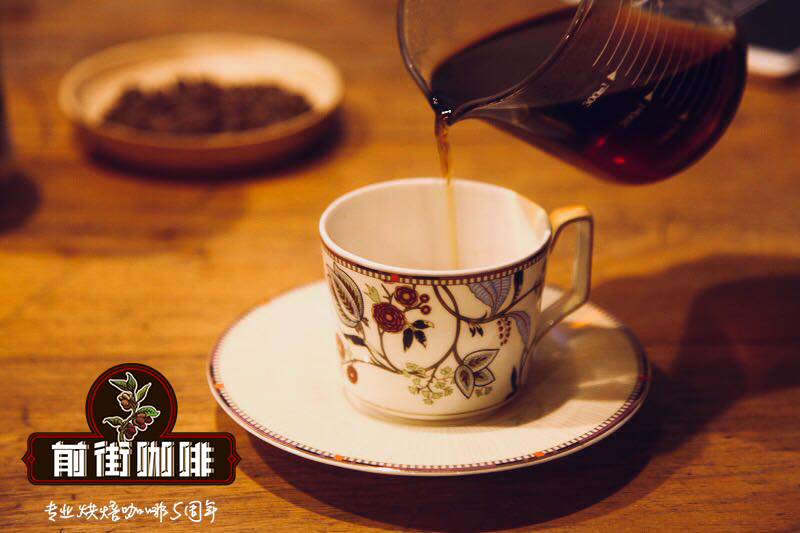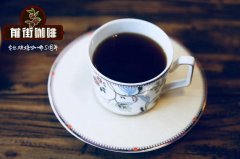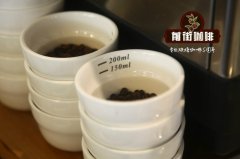Tanzania Mbeya region| Sangura Sangura Processing Plant Washed Red Bourbon Flavor and Brewing

Professional coffee knowledge exchange more coffee bean information please follow the coffee workshop (Wechat official account cafe_style)
Tanzania Mbeya production area | Sangura Sangula treatment plant washing red bourbon flavor and cooking reference?
Tanzanian coffee is characteristic of Central / East African water-washed beans with bright acidity and strong flavor. Although everyone knows that Kenya is still a good coffee, Tanzania is eager to catch up and has the same positive qualities as Kenya. This is the second year that Gardelli has purchased coffee from the Sangula Mubochi Coffee processing Plant (Sungura Mbozi CPU;Coffee Processing Unit), which is quite consistent and bright in quality and full of sweetness.
The Sangula washing plant Sungura washing station is located in the southern highlands of Mbeya in western Tanzania. Farmer Business Groups;FBG, like Masangula, Isende, Iyula and other similar organizations, are cooperative in nature, made up of small farmers, integrating resources, treatment plants and marketing. In places like Tanzania, each small farmer produces only a few bags of coffee, which is very small. As a result, members of the farming class FBG combine their micro-yields into a batch so that coffee can be sent to be processed by larger machines, rather than having to be processed manually because the quantity is too small. The Sangula washing plant is about 1620 meters above sea level, while the planting elevation of coffee trees can be as high as 1800 meters, mainly red bourbon (Red Bourbon).
The focus of the washing method is all on the beans themselves. Washed coffee allows you to taste the inside of the beans, not the outside. The washing method must allow the beans to absorb 100% of the sugar and nutrients naturally during the growth process, which means that the variety, soil, fruit maturity, fermentation, washing, and drying are very important.
Washed coffee reflects the science of growing perfect coffee beans, and it also proves that farmers are an essential element in the process of making good flavor. of course, we look at washed beans, and the country and its environment play a vital role in flavor performance.
In the washing treatment, the peel and pulp are removed mechanically, and the remaining pectin is still attached to the bean shell and should be removed before drying. In the process of treatment, the sugar in pectin is removed by natural fermentation or by another mechanical (de-pectin machine). After washing again, after all the pectin mucus on the shell beans has been removed, the shell beans can be placed in the sun field or on the elevated shed bed to dry.
Production area: Mbeya
Washing plant: Sangula treatment plant Sungura
Producer: local small farmers
Altitude: 1750 m
Bean seed: red bourbon Red Bourbon
Treatment: washing Washed
Flavor: lime peel, Earl Grey Tea, grape, crude sugar
Qianjie recommended cooking:
Filter cup: Hario V60
Water temperature: 90 degrees
Degree of grinding: small Fuji 3.5
Cooking methods: the ratio of water to powder is 1:15, 15g powder, the first injection of 25g water, 25 s steaming, the second injection to 120g water cut off, waiting for the powder bed water to half and then water injection, slow water injection until 225g water, extraction time about 2:00
Analysis: using three-stage brewing to clarify the flavor of the front, middle and back of the coffee. Because the V60 has many ribs and the drainage speed is fast, it can prolong the extraction time when the water is cut off.
Important Notice :
前街咖啡 FrontStreet Coffee has moved to new addredd:
FrontStreet Coffee Address: 315,Donghua East Road,GuangZhou
Tel:020 38364473
- Prev

Tanzania Mbozi Province| Ilomba Village Ilomba Washing Plant Kent kents flavor?
Professional coffee knowledge exchange More coffee bean information Please pay attention to coffee workshop (Weixin Official Accounts cafe_style) Tanzania Mbeya production area| Ilomba Village Ilomba Washing Plant Kent kents flavor? Ilomba washing plant is located in Ilomba village, Mbozi province, Tanzania, southwest of the country on the steep slopes of Mbeya highlands, Ilomba Ilomb
- Next

San Jose, a canyon in central Costa Rica. What is the flavor of rose summer honey treatment on Donna Daisy Farm?
Professional coffee knowledge exchange more coffee bean information please follow the coffee workshop (Wechat official account cafe_style) Central Costa Rica Canyon San Jose | Donna Daisy Farm Rose Summer Red Honey treatment? Donna Daisy Farm (Finca Dona Daisy) is located in San Jose, a canyon producing area in central Costa Rica, at an altitude of 1700 meters.
Related
- Detailed explanation of Jadeite planting Land in Panamanian Jadeite Manor introduction to the grading system of Jadeite competitive bidding, Red bid, Green bid and Rose Summer
- Story of Coffee planting in Brenka region of Costa Rica Stonehenge Manor anaerobic heavy honey treatment of flavor mouth
- What's on the barrel of Blue Mountain Coffee beans?
- Can American coffee also pull flowers? How to use hot American style to pull out a good-looking pattern?
- Can you make a cold extract with coffee beans? What is the right proportion for cold-extracted coffee formula?
- Indonesian PWN Gold Mandrine Coffee Origin Features Flavor How to Chong? Mandolin coffee is American.
- A brief introduction to the flavor characteristics of Brazilian yellow bourbon coffee beans
- What is the effect of different water quality on the flavor of cold-extracted coffee? What kind of water is best for brewing coffee?
- Why do you think of Rose Summer whenever you mention Panamanian coffee?
- Introduction to the characteristics of authentic blue mountain coffee bean producing areas? What is the CIB Coffee Authority in Jamaica?

